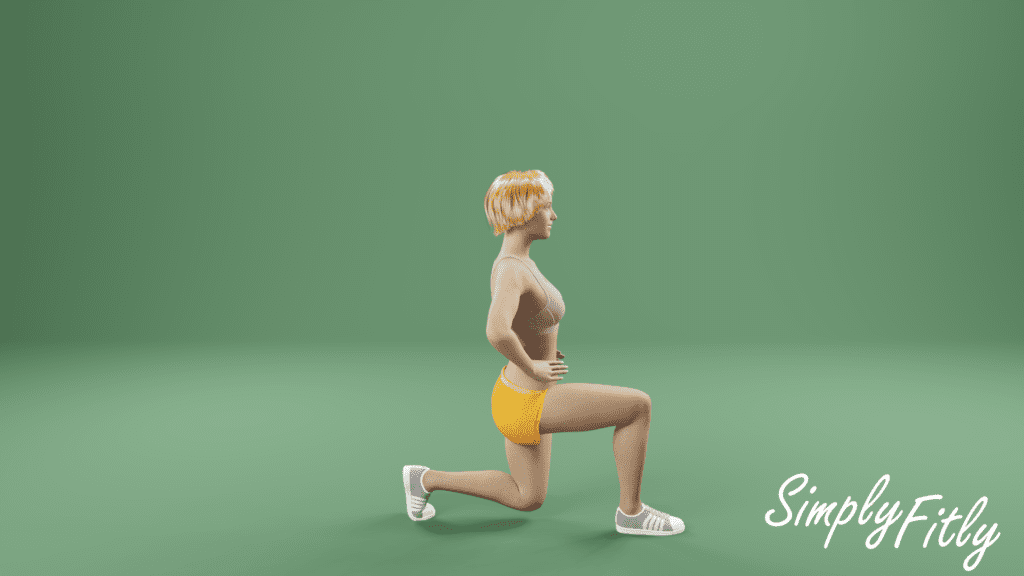
Muscle group: lower body (quadriceps, hamstrings, glutes, calves).
Intensity: moderate.
Directions
- Stand tall with feet hip-width apart and engage core muscles for stability.
- Take a step forward with one leg, landing with a soft knee and keeping the knee aligned with the ankle.
- Lower your body by bending both knees until the back knee is just above the ground, keeping your torso upright and core engaged.
- Push through the heel of the front foot to return to a standing position.
- Repeat on the other leg, alternating sides.
- Perform the desired number of repetitions on each leg.


Modifications: to make it easier, perform lunges in place. Instead of stepping into each lunge, do 4-8 reps on one leg, then switch to the other leg, and continue alternating legs.
Mistakes
- Poor form: One common mistake is poor form, including not maintaining proper alignment of the knees, ankles, and hips, and not keeping an upright posture. This can lead to increased risk of injury and reduced effectiveness of the exercise.
- Overstriding: Another mistake is taking too long of a stride, which can put excessive strain on the knees and may cause discomfort or pain. It’s important to take a comfortable stride length and keep the knee aligned with the ankle.
- Collapsing knees: Allowing the knees to collapse inward during lunges can lead to poor alignment and increased risk of injury. It’s important to keep the knees in line with the toes throughout the movement.
- Rounded back: Allowing the back to round or hunch forward during lunges can put unnecessary strain on the lower back and increase the risk of injury. Maintaining a neutral spine and upright posture is important.
- Lack of control: Performing lunges too quickly or with jerky movements can reduce the effectiveness of the exercise and increase the risk of injury. It’s important to maintain controlled movements throughout the exercise, focusing on proper form and technique.
Conclusion
Forward lunges are a highly effective lower body exercise that primarily targets the quadriceps, hamstrings, and glutes. This compound movement helps strengthen and tone the muscles of the legs and hips, improving lower body stability and balance. Lunges also engage the core muscles, enhancing overall core strength. Moreover, forward lunges promote flexibility in the hip flexors and improve hip mobility.
This is a versatile exercise suitable for various fitness levels. It mimics functional movements like walking or climbing stairs, making it valuable for everyday activities. Lunges contribute to better posture, coordination, and athletic performance by enhancing lower body strength.
Forward lunges can be an excellent addition to a circuit training. They add diversity to the routine by targeting different muscle groups compared to other exercises. Incorporating lunges in a circuit helps elevate the heart rate and increases the cardiovascular aspect of the workout. As part of a well-rounded circuit, forward lunges contribute to a balanced full-body workout that combines strength and cardiovascular training.